What is meant by implementation intention?
Many people have positive intentions but they fail to act on them. They either forget to take action or seize the right opportunity. They get derailed by distractions or fall back to old habits. Saying “I will jog” or “I will read daily” is showing good intention. However, good intentions don’t necessarily translate into accomplishments.
Implementation intentions provide a solution to this problem. Introduced by psychologist Peter Gollwitzer in 1999, implementation intentions involves making a plan beforehand about when and where you intend to act. In other words, when situation x arises, I will perform response y.
A self-regulatory strategy in the form of an if-then plan can lead to better goal attainment by increasing the likelihood of follow-through.
If you haven’t been able to follow through on your plans, neither do you lack talent nor do you lack motivation. What you lack is putting your intention to action. All you need is a concrete plan of implementation.
What is the formula for an implementation intention?
There are two parts to setting implementation intentions:
-
Initiating the action
-
Staying on course
Initiating the action
Create a specific plan detailing when and where you are going to initiate the desired behavior.
For example...
I will [DO ACTION] at [TIME] in [LOCATION].
-
I will jog Monday to Saturday for ten minutes at 7 a.m. outside my apartment.
-
I will replace fries with ten sticks of boiled baby carrots at 2 p.m. for lunch in my kitchen.
-
I will practice public speaking for ten minutes at 8 p.m. right after dinner in my bedroom.
Staying on course
Things won’t always go according to plan. Unexpected situations might derail you from expected behaviors. Sometimes competing goals may demand your attention. Intended action can be thwarted by attending to attractive distractions. What do you do then? In situations like these, design implementation intentions using the “if-then” version.
Simply put, think about all the obstacles that might interfere with your goal and plan upfront on how to handle them. This way when you do encounter those hurdles preventing you from making progress in your goals, you can use the right strategy to turn them around. You can make the best possible decisions well in advance to keep you on track no matter what comes your way. You can be more flexible to adjust to the unexpected events in your life instead of letting them control your behavior and prevent you from achieving your goals.
For example...
If [THIS HAPPENS], then I will [DO THIS].
-
If I cannot jog this Monday morning at 7 a.m. since I have to pick my friend from the airport, then I will do it Monday evening at 6 p.m.
-
If I cannot practice public speaking at 8 p.m. on Wednesday since I have to attend a birthday party, then I will practice at 6 a.m. on Wednesday right after I wake up in my bedroom.
-
If I am presented with a dessert option when it’s my turn to eat healthy, then I will order fruits.
What is an example of implementation intention?
Here are some examples of implementation intentions:
Initiating action
-
I will jog Monday to Saturday for ten minutes at 7 a.m. outside my apartment.
-
I will replace fries with 10 sticks of boiled carrots at 2 p.m. in my kitchen.
-
I will practice public speaking for 10 mins at 8 p.m. after dinner in bedroom.
Staying on course
-
If I cannot jog this Monday morning at 7 a.m. since I have to pick my friend from the airport, then I will do it Monday evening at 6 p.m.
-
If I am presented with a dessert option when it’s my turn to eat healthy, then I will order fruits.
-
If I cannot practice public speaking at 8 p.m. on Wednesday to attend a birthday party, then I will practice at 6 a.m. on Wednesday in my bedroom.
How are implementation intentions set?
Implementation intentions are set by planning in advance on when and where you intend to act. For each action you intend to take, write down the exact time and location where you wish to take this action. Also, identify obstacles that might get in the way of taking action and plan upfront on how to handle them.
Doing this can help in positive habit and behavior modification thereby enabling you to achieve your goals.
Use the worksheet provided with this product to create your own implementation intentions.
Why are implementation intentions effective?
Unless you create a specific plan detailing when and where you are going to initiate the desired behavior, you will fail to realize multiple opportunities presented during the day when it was possible to make progress on your goals.
Saying “I am going to run tomorrow” without specifying the exact time and location has a much lower chance of follow-through. That’s leaving it to chance—hoping you will remember to do the activity, find time to do it, and also feel motivated to do it at the right time. With vague commitments, it’s easy to stay busy by doing inconsequential work without ever getting around to doing the specific things you need to succeed. Implementation intention exactly solves this problem. It turns desires into concrete actions “I’m going to run every day for 10 mins at 7 pm outside my apartment.”
You no longer need to decide or wait for the inspiration to strike. Should I jog in the morning or the evening? Is it the right time to write? Should I replace a healthy option in this meal or the next one? You can initiate the intended response by simply acting on your plan.
Another advantage of implementation intention is that with enough repetition, engaging in goal-directed behavior becomes automatic. You no longer need conscious intent. You automatically act when the situational cue presents itself. Without the hurdles of decision-making and the additional advantage of the right cues in your environment, you can prime yourself to act.
Lastly, the formation of an action plan serves as a commitment to act. Research shows that breaking commitments generates discomfort which makes it more likely for you to stick to your plan.
When to use implementation intentions?
While implementations intentions can be set for any type of activity, they're particularly helpful:
-
When strong intentions already exist
-
When these intentions are intrinsically motivated
-
When at least some obstacles exist
-
When no current plan exists
-
When the risk of forgetting to act is high
-
When the timeline for action is finite
-
When planning will induce people to consider specific barriers to action
-
When there is a specific future time for action
-
When people can think specifically about implementation details
-
When there are opportunities to share plans publicly
-
When planning for single rather than multiple goals
-
When there is a low likelihood that unanticipated moments for action will arise
What's the difference between goal intentions and implementation intentions?
Goal intentions specify what you want to achieve. They are typically phrased as: I want to achieve X!
Implementation intentions are more specific and connect the situational context in which you need to act with the behavior you need to perform to attain that goal. They are phrased as: If situation Y occurs, then I will do Z. They involve the transformation of good intentions into concrete behaviours.
Implementation intentions are effective in initiating goals, shielding of ongoing goal pursuit from unwanted influences, disengagement from failing courses of action, and conservation of capability for future goal striving.
Where goal intentions are more general and abstract, implementation intentions are much more concrete and procedural.

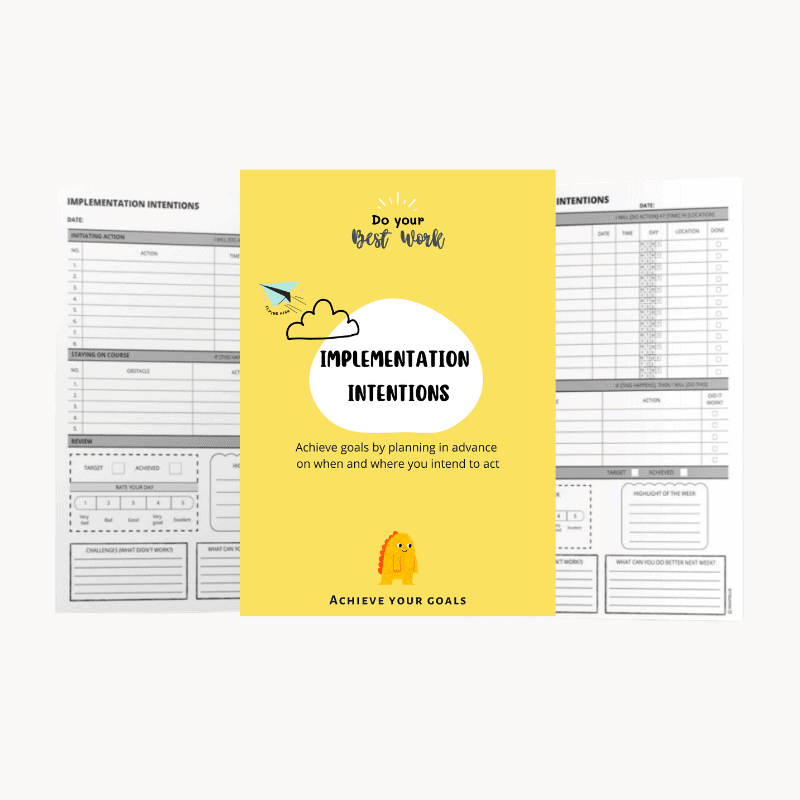
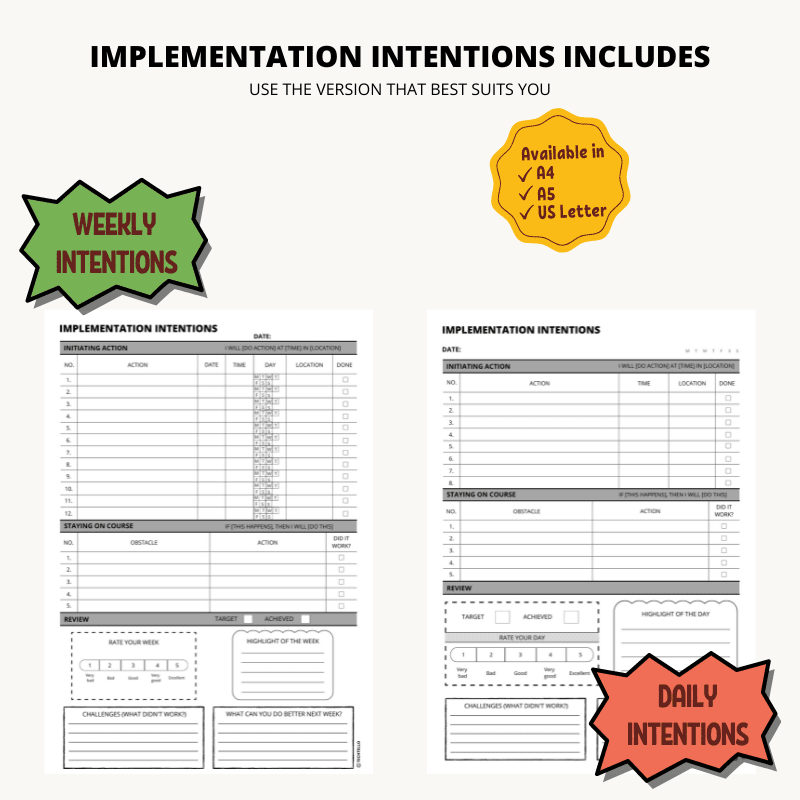
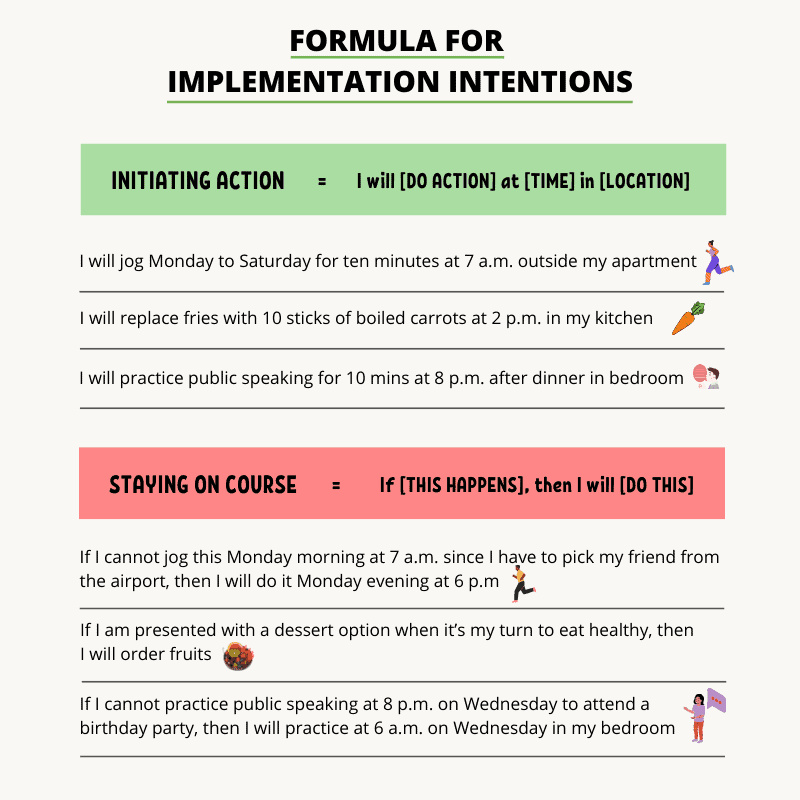
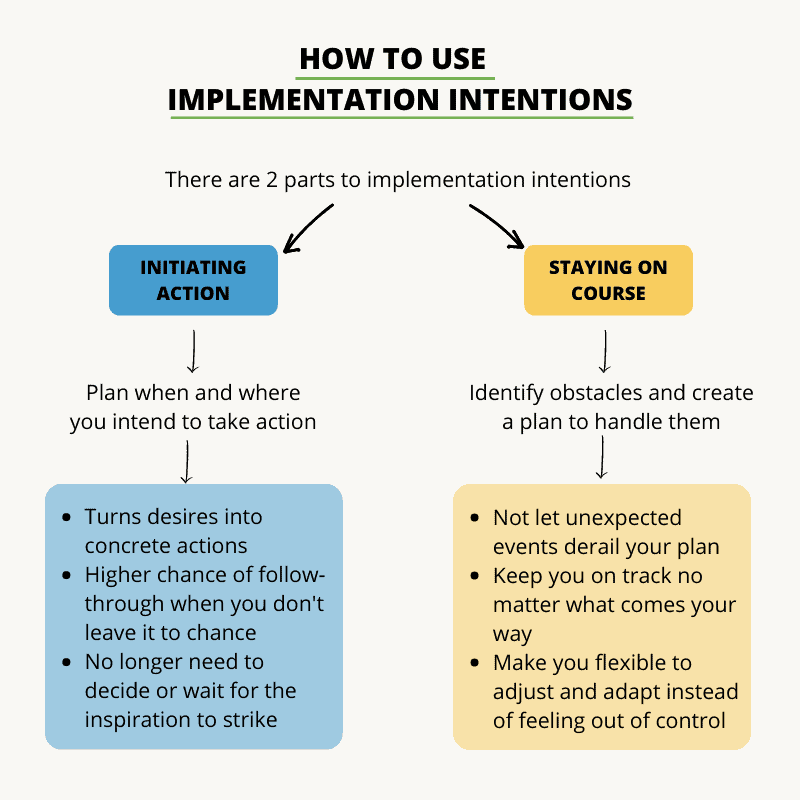
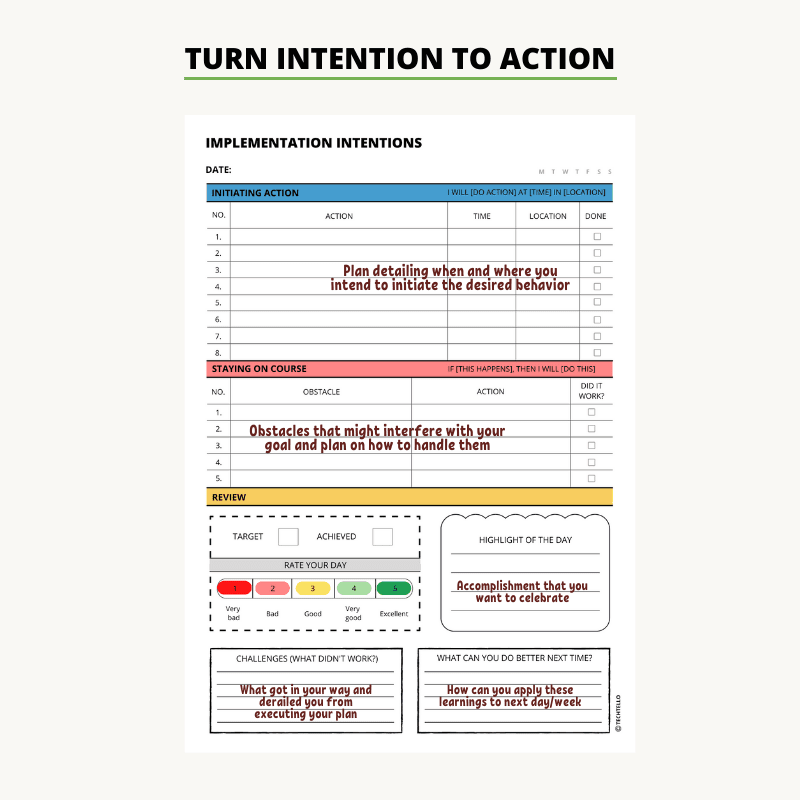
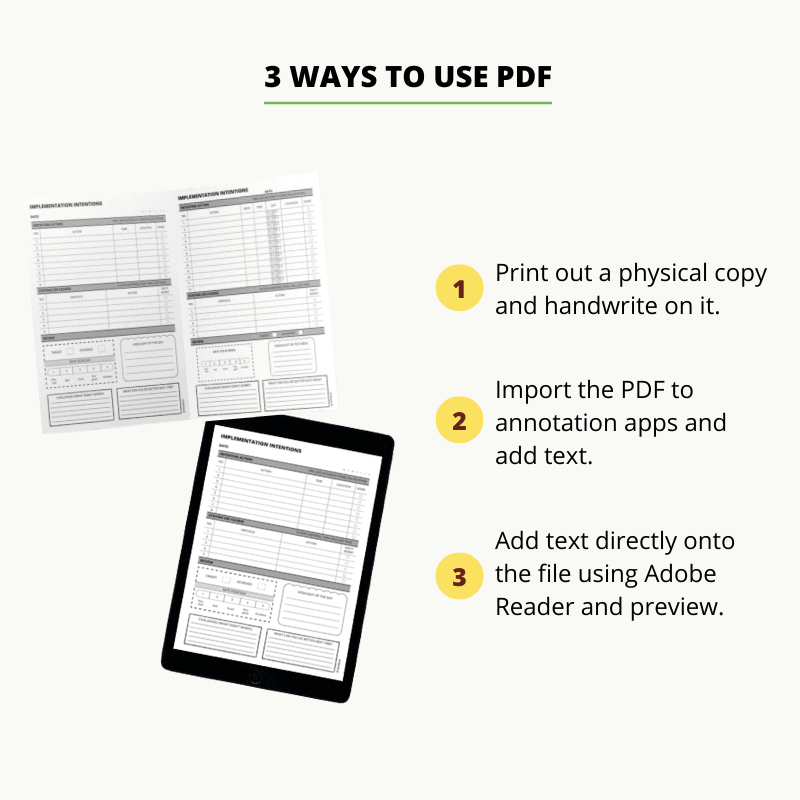
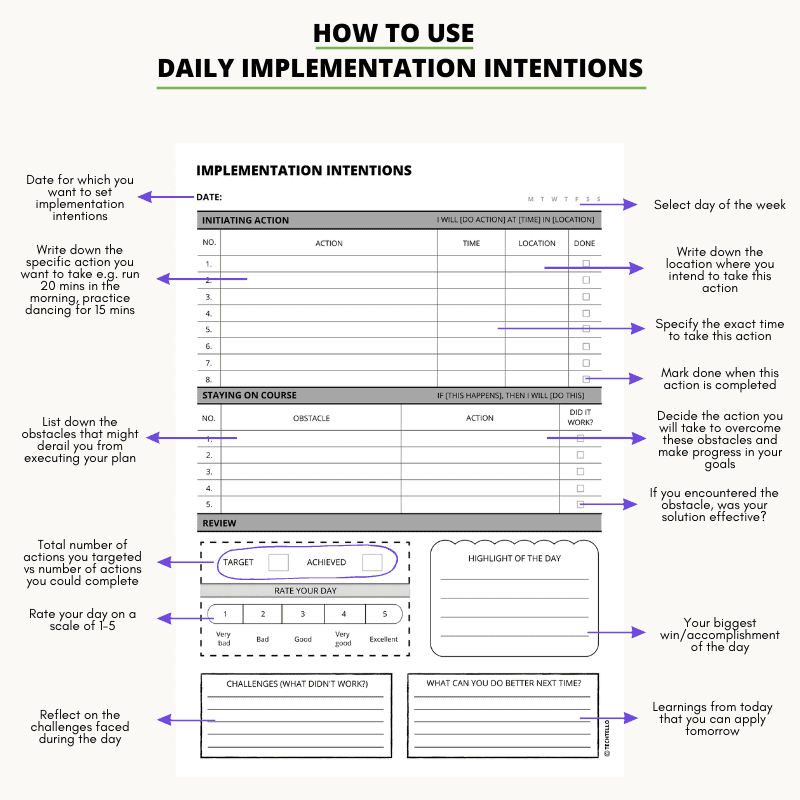
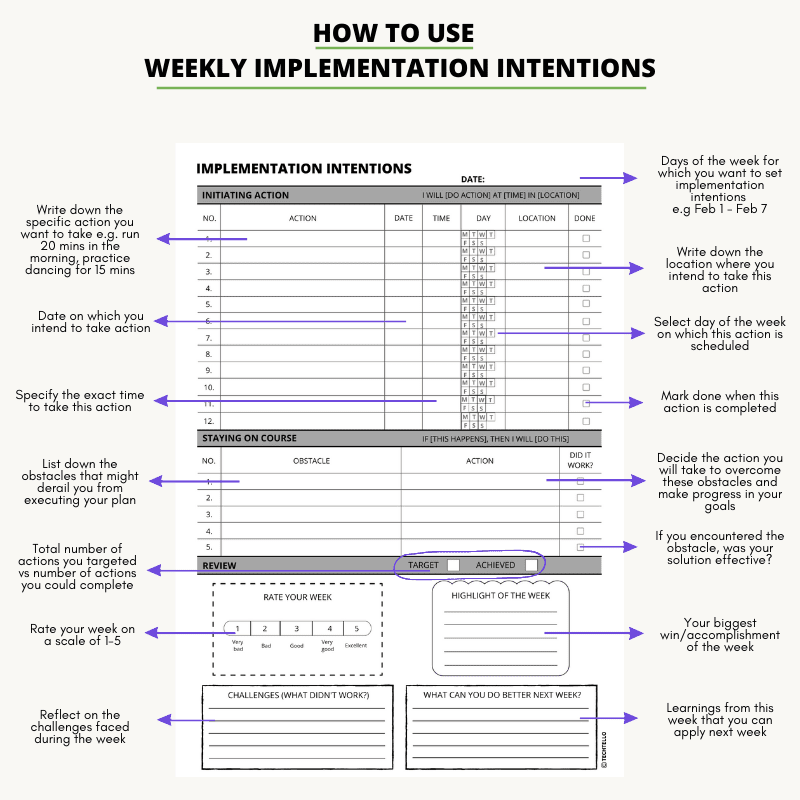
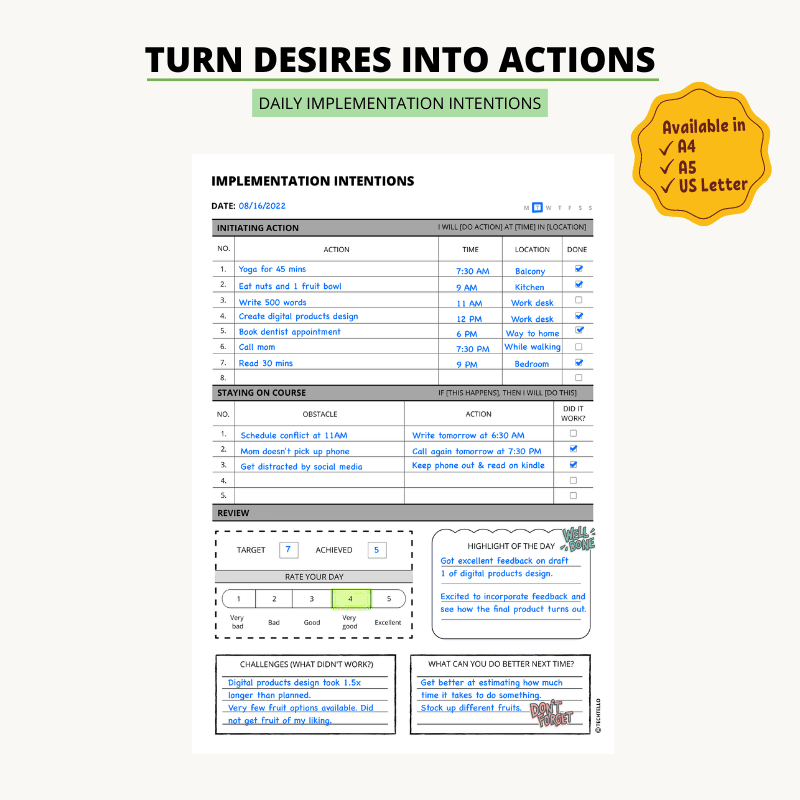
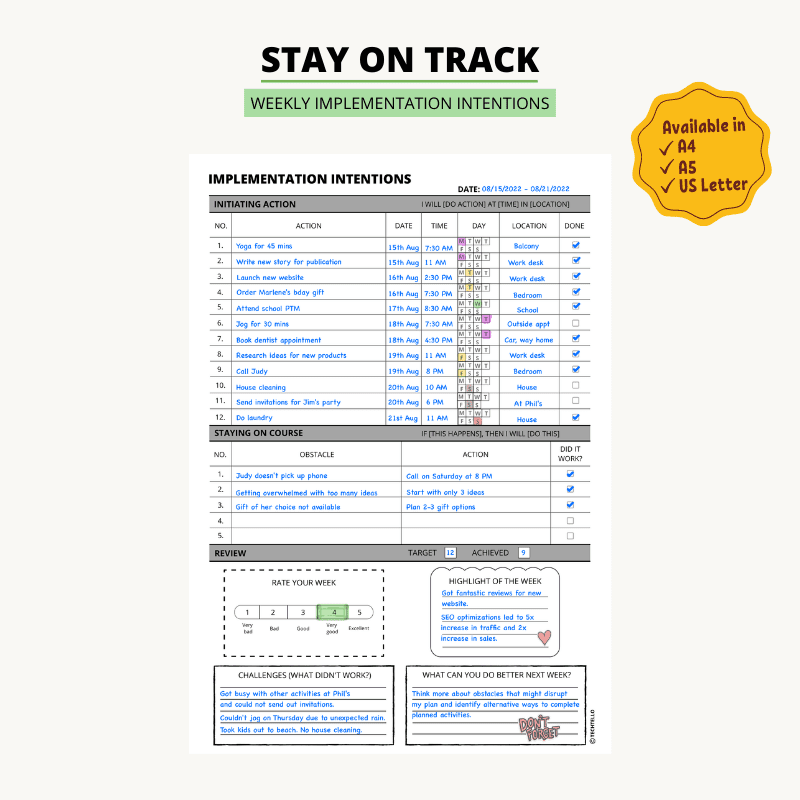
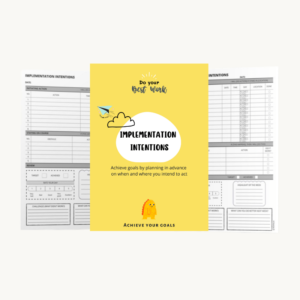
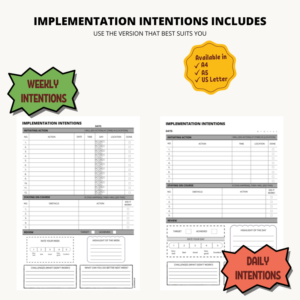
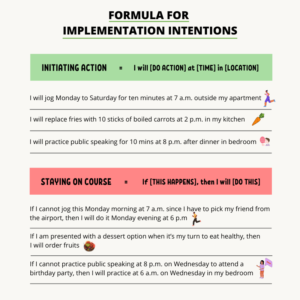
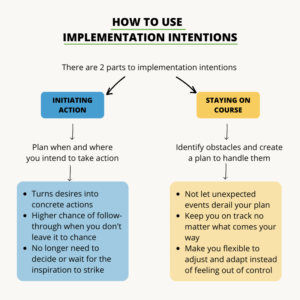
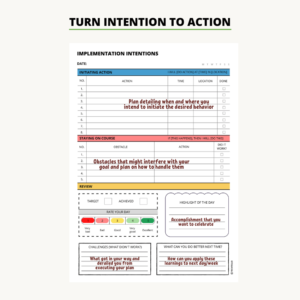
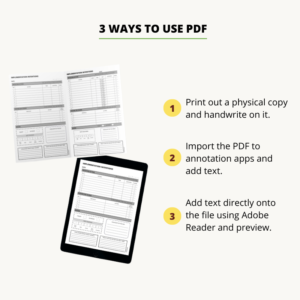
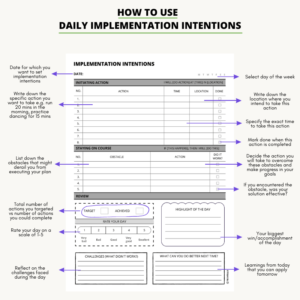
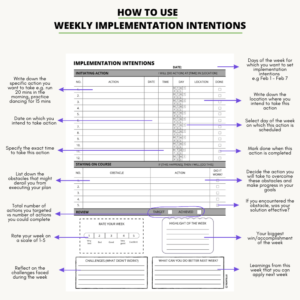
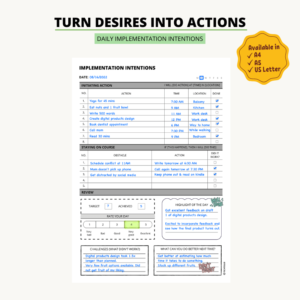

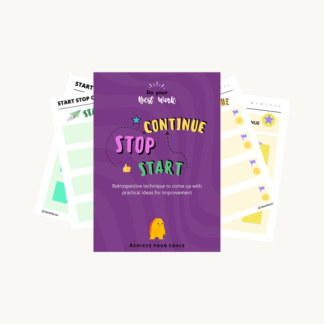
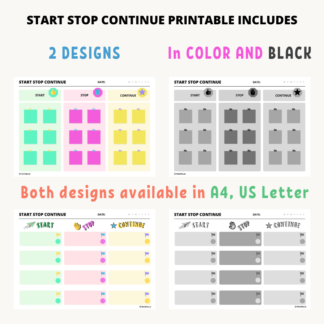
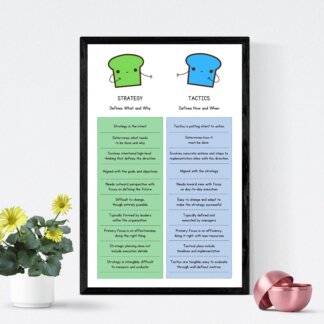
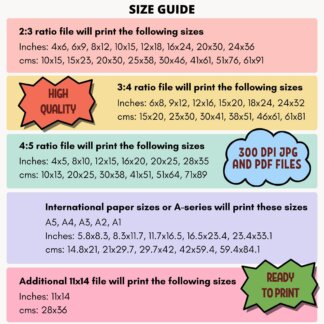
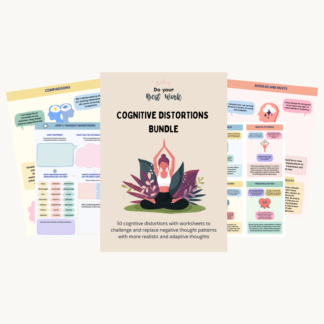
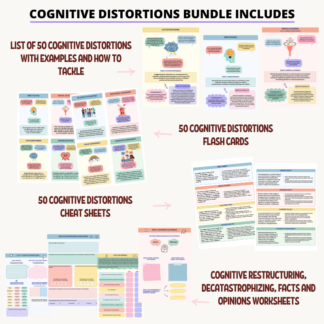

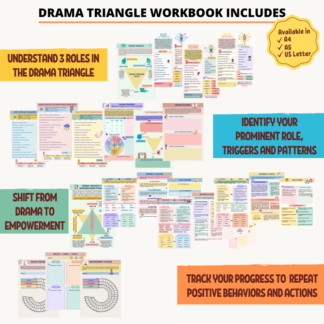
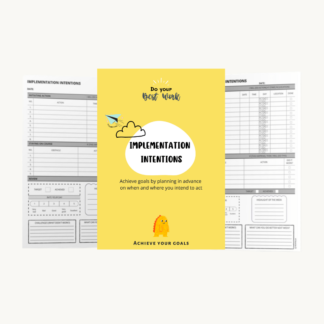
Reviews
There are no reviews yet.